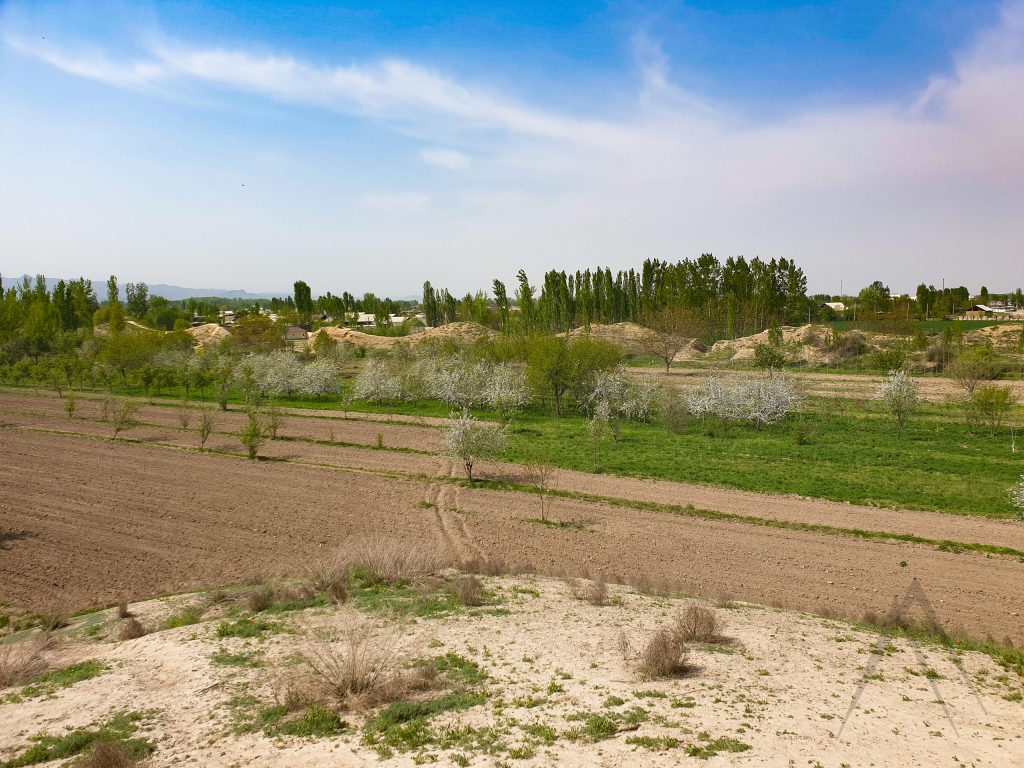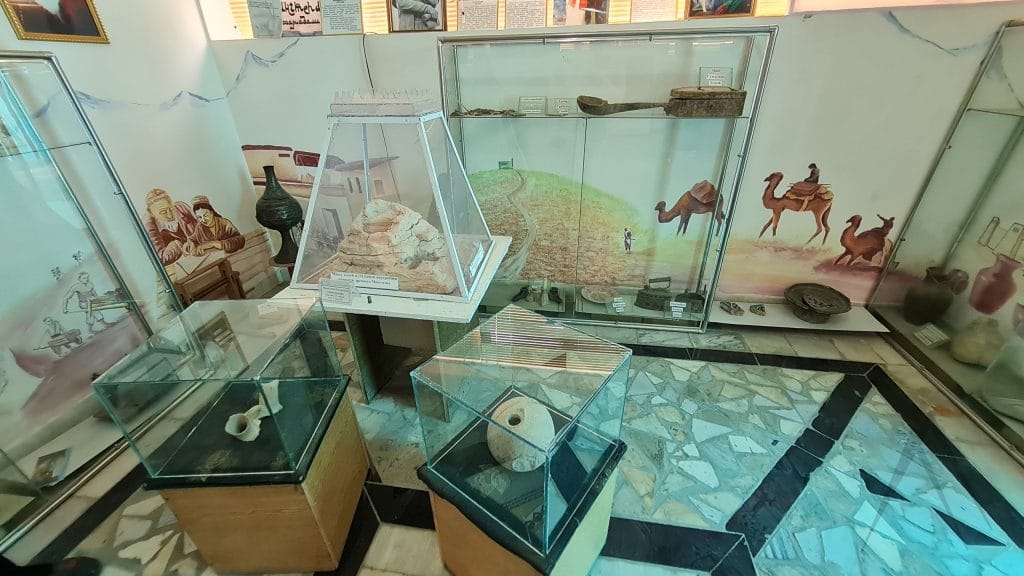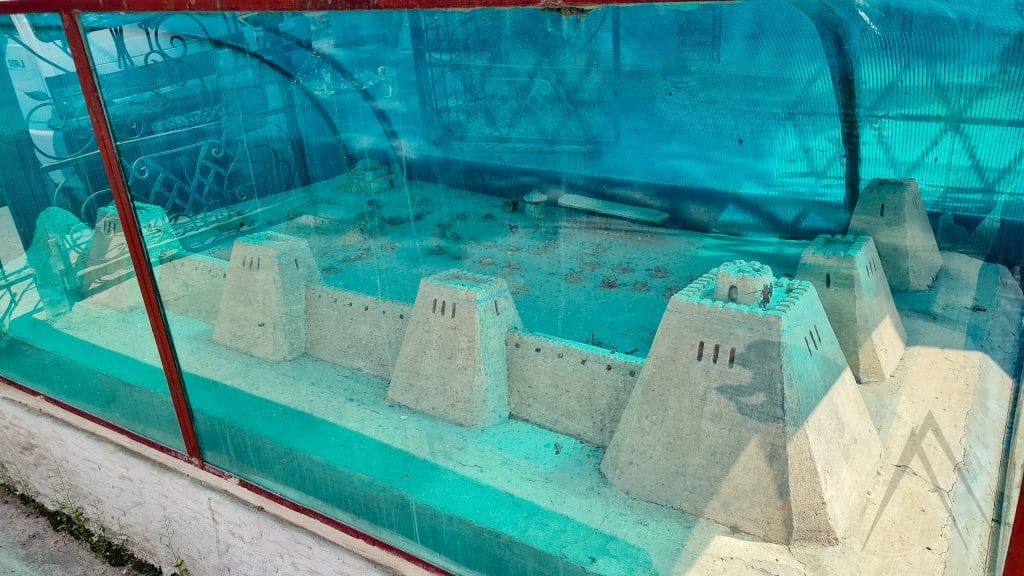Ancient settlement Ershi, Mingtepa
Mingtepa, Davan, Ershi
At the beginning of the 1st millennium B.C., a state with a developed agricultural culture arose in the Fergana Valley. According to the Chinese chronicles, it is called Davan. The origin of the name is associated with the ethnonym Tochar, a strong nomadic tribe and the capital of Davan was the city of Ershi (ruins in the modern village of Markhamat, 30 kilometers southwest of Andijan). During later times the city was called Mingetepa. Old cities under several rules tend to have many names.
The state that appeared was ruled by a dynasty of local kings. Their power was limited by a council of elders from the society. The council elected and removed the tsar, resolved issues of war and peace, the establishment and severing of diplomatic relations with other countries.
The decisions of the council of elders were also required on the rulers of individual cities. The support of the state was made up of free rural community members. In case of war, an army of up to 60 thousand people armed with bows and spears was recruited from them.
The economy used slave labor, but slavery was more domestic in nature since the main role in the production was played by the rural community. The basis of the economy of Davan was irrigated agriculture. The community members grew rice, wheat, cotton, alfalfa, grapes, from which they made excellent wine. The pride of Davan was thoroughbred horses, which were famous throughout Central Asia.

The population of Fergana was about 300 thousand people. The Davan inhabitants had a Caucasian appearance, they were very tall 2 meters in average and they spoke one of the East Iranian languages. There were up to 70 cities and towns in Fergana. The archaeological excavations revealed that most of them lived in small villages and homesteads which was well fortified and could withstand enemy invasions.

Ershi the capital was surrounded by several rows of fortifications. The central part was surrounded by strong walls with towers made of adobe bricks. The eastern borders of the state were defended by the city of Yu. Archaeologists found its ruins 8 km north of modern Uzgen, near the village of Shu-Rabashat. From the east, west, and north, it was surrounded by high defensive walls with towers.
A strong river protected the approaches from the south. The walls of the citadel towering above the small residential buildings, which were built of adobe bricks, the ruins of which are still 12 m high.
Mingtepa
Davan was on the way to the Great Silk Road. Later, during the rule of the Turks in the Middle Ages, this city got a new name – Mingtepa. Mingtepa was gradually falling into decay. Reduced trading activity on the Great Silk Road as well as numerous conquests caused the decline of the city. Over time, people have moved and built a new city on the site of modern Andijan.


Heavenly Horses
Fergana horses were in remarkable demand. Argamak horses were the most famous. This breed was the object of desire of the aristocracy in neighboring countries. The Chinese especially dreamt of these “blood-sweated” horses for the war purposes as they were larger and better behaving in battle situation. In China, people even devoted poetic odes to these horses and in 104 BC the huge Chinese army attacked Ershi to expand their territory as well as to get heavenly horses.
The Chinese considered them the “heavenly horses”, which could reach at the gallop the “country of immortality”. These horses are also known in Kyrgyzstan as The Celestial Horses of Aravan, which is a town just on the other side of the border, not far from the ruins of Mingtepa.
Mingtepa archeological Excavations

Archaeologists Archaeological Institute of Chinese Academy of Social Science (CASS) along with the cooperation of the Archaeological Institute of Uzbekistan Academy of Science have been working in the Mingtepa settlement area since 2012. Together, they performed four excavations in Mingtepa ruins and obtained a group of significant archaeological findings.
Archeologists discovered a huge layer of data about the crafts and art of the ancient settlement as well as obtained a significant number of samples of the products of the artisans of Mingtepa. These are ceramic products, stone items, products used in construction. For instance, they have recorded at least 20 types of vessels that were made by local potters.
Davan Museum in Marhamat
There is a small privately held museum telling about the history of the Ershi (Mingtepa) city just next to the main crossroad of the Marhamat town. The owners and workers there are very eager to tell about the findings as not many foreign tourists visit this place yet.


Sights & destinations near Mingtepa
Fergana valley
All Uzbekistan sights & destinations
Page updated 28.4.2022